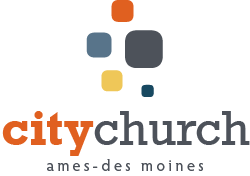Structured creativity within the churches
Posted by Caleb Keller | Published May 23, 2017

All the churches of the Ames-Des Moines CityChurch take the bread and the cup—but some take the cup at the end of the meal, and others do so at the end of the meeting. All the churches invest some time in instruction, singing, sharing, and praying; some do so in a predictable order, and others do not. Some churches plan out certain elements for the formal meeting time—and (you guessed it!) other churches don’t.
When we first launched the Ames-Des Moines CityChurch, in the fall of 2010, we knew that not every church would do things just the same way, and that was OK. At the same time, though, we also expected all the churches to have the same essential elements—the same DNA, so to speak. The balance between the principles of order and freedom has allowed the churches flexibility to minister effectively.
The common DNA of our meetings is patterned on the meetings of the earliest Christian churches. Each church meets on Sunday evenings, in homes throughout Ames and Des Moines. The centerpiece of our meetings is the Lord’s Supper, a real meal during which we break bread together as a remembrance of Jesus and a proclamation of his death. After the meal, each of our churches has a formal meeting time, a time of discussion, teaching, sharing insights, and bringing artistic contributions, among other contributions and elements.
Each of the churches of the Ames-Des Moines CityChurch share these in common. When Randy Beckett and I chatted about this he observed that, “the strength of there being a commonly held structure is that there really is a unity, a shared language, a shared set of experiences that we recognize that have shaped us.” The members of our churches know that whatever differences might exist between the churches, we share unity of purpose and experience around the shared DNA of the network. This unity allows the churches to come together seamlessly and naturally in larger gatherings of the church network, and for shared endeavors, like the banquet at the annual BILD summit.
Significantly, the shared structure means that when new churches are planted, there is already a model for organization and function that doesn’t have to be redefined. All the churches have a common model for leadership, for example, as Mark Bland pointed out in a recent conversation. And, he said, “the structure of the meeting itself is similar. The time will begin with a meal, where the bread is broken before the meal, and the cup is taken after the meal (sometimes at the end of the whole meeting). After that, there’s a more formal time.” This allows for expansion to happen without the sorts of institutional headaches that might otherwise be there.
Within this commonly held structure, however, there is flexibility for each church to express its own distinct character. This flexibility “allows the churches to be creative and unique in their expression of what it means to be the church,” Mark said. He mentioned, for example, that each church has its own approach to time and schedule. Whereas churches with many young children tend to start and end relatively early, some can go later into the evening.
In addition, Randy noted that “there are varying needs related to the particular people within churches, various opportunities related to expansion, and that’s where some of the variety comes.” No church will be exactly like any other, for the simple reason that each represents a different mix of people. Consequently, the leaders of the churches will be caring for different shepherding needs, and responding to differing opportunities to serve their in communities.
The key to it all is the ability to hold on to our shared DNA, while at the same time allowing the flexibility necessary to meet pressing needs, address shepherding issues, and participate in the mission of the church. On the one hand, because every church is different, Randy said that “there’s a need for shepherding decisions to be made within each church.” But these differences from church to church occur, according to Randy, “within the commonly-held structure that we all have.” Neither rigid orders of service, nor anything-goes flexibility will do, Mark told me. “There’s a continuum between a prescribed liturgy and chaos.” The goal, he said, is “finding that spot in the middle, that allows for the growth and maturity in the church.”
Posted In Paradigm
